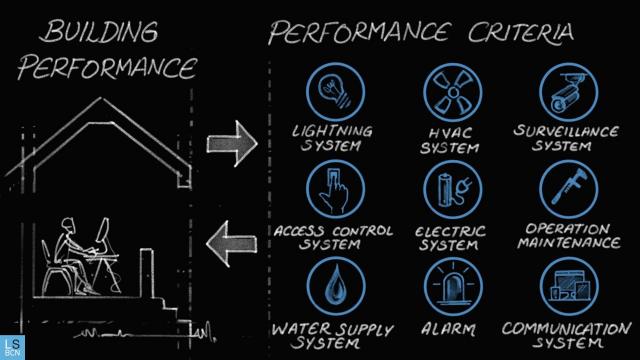Learning from building behavior – POE

The POE - Post Occupancy Evaluation - allows us to obtain feedback from an asset, sometime after its construction. In this way, the quality of a building and its occupants improves considerably.
But what is the value of ensuring the efficiency and effectiveness of the asset, and above all the well-being of its occupants?
In this post, we go through the advantages of performing a post occupancy evaluation and the execution of the POE process in construction projects.
Post Occupancy Evaluation
The post-occupancy evaluation allows, in architectural processes, to analyze the performance of a building sometime after its construction. The occupants of such dwellings will thus provide a complete picture of the current situation of the building.
The way in which the construction processes are established affects the way in which the inhabitants live.
Only by detecting how our buildings behave after being built-occupied can we know what the buildings of the future should be like, to meet the needs of their occupants and not just their designers" Juan Antonio Castro
Architects using the POE method will verify months or even years later, the quality of life and needs of their residents.
Post-occupancy evaluation enables a process of continuous improvement in the AECO (Architecture, Engineering, Construction and Operations) sector by facilitating the discovery of successes and failures or recommendations in various projects.
Historic
In 1981 Marans and Spreckelmeyer analyzed how the physical and organizational environment of the workplace influenced workers' behavior and perceptions; relating objective environmental attributes to users' subjective perceptions and evaluations of the effect of the work environment on occupant behavior and overall satisfaction.
Between the 1970s and 1980s, many research works were developed in relation to post-occupational evaluation, locating the first collaborations between architecture and medicine professionals in the area of hospital design.
Field (1971) conducted a comprehensive evaluation of the Tufts University Medical Center building, analyzing variables such as:
-
Proximity of hospital functions.
-
Staff travel time.
-
Time patients spent in beds.
-
Differences in staffing requirements and efficiency.
A similar effort was undertaken by Trites (1970) the same year in the first SOP efforts in Great Britain by the Pilkington research unit, which reported on the evaluation of offices and schools.
Features and benefits
Some SOPs are lightweight, while others are more in-depth, and are used in a wide range of techniques, depending on the focus of buildings.
SOPs with a good level of depth provide a means of assessing compliance with project requirements, obtaining feedback from building occupants and determining how efficiently a new or renovated building is performing.
Wasting enormous amounts of money, effort and resources, constructing buildings that need to be retrofitted or even demolished years after commissioning, will be avoided" Juan Antonio Castro
Short-term benefits
Allows to identify successes and failures in the performance of the building, obtaining recommendations for the resolution of problems in the installation.
Budget cutting. Common in the fiscal planning phase of the construction process, reducing the cost of a project often results in lower quality, which in turn can negatively affect the operation of the organization occupying the building.
Reduced budgets require detailed analysis of design alternatives while maintaining the level of quality and performance, POE allows these alternatives to be implemented.
Medium-term benefits
Change of use of buildings, new facilities or the addition of buildings to accommodate the changing space needs of organizations are examples of how POE can provide a rationale for:
-
Reuse
-
Remodeling
-
Construction
Long-term benefits
The record of lessons learned in terms of building performance successes and failures are applicable to the design of future buildings. They also provide knowledge to designers, builders and other members of project teams on how their buildings perform in use and how to meet client requirements.
The time for these long-term benefits to be seen ranges from 3 to 10 years and is a major benefit for office buildings, schools, shopping malls, hotels and residential buildings.
Related studies
At La Salle-URL we provide specialized programs in project management. Acquire the competences and necessary skills to become a management professional from an innovative and technological perspective.
The Master's Degree in Project Management offers you the opportunity to specialize in areas such as pharma and biotech, start-ups, digital transformation, Agile...
In addition, you will be able to join the largest project manager networking network in Europe.

